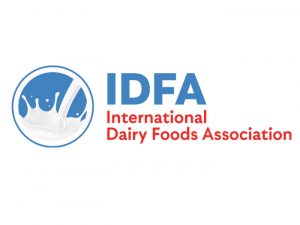
Dive Brief:
- Calling federal school meal policy on alternative milk an “issue of equity as it places an unfair burden squarely on minority children,” 31 members of Congress have asked the U.S. Department of Agriculture to address the issue.
- Currently, children who are lactose intolerant must provide a doctor’s note to receive alternatives to cow’s milk in schools. And students of color face high rates of lactose intolerance, according to an Oct. 13 letter to Agriculture Secretary Tom Vilsack from the members of Congress.
- Moving forward, the congressional leaders said they want to work with the USDA to reconsider the policy. Additionally, they urged an awareness campaign about lactose intolerance and maldigestion as a way to help improve children’s health and school performance.
Dive Insight:
Because schools fear losing school meal reimbursements for not serving beverages that fall under the allowable “milk rate,” the letter said, lactose intolerant children are “being forced to accept” cow’s milk in their cafeterias.
The members, who are all Democrats, wrote that the “inattention to the health effects of lactose-intolerance and dairy allergies combined with the near-exclusive offering of dairy to minority students is a textbook example of dietary racism.”
Members who signed the letter include Rep. Jamaal Bowman, D-New York, who is vice chair of the House Committee on Education and Labor, and committee member Rep. Andy Levin, D-Michigan.
The letter praised the 2020-2025 Dietary Guidelines for Americans for recognizing soy milk as nutritionally similar to milk. A nondairy beverage must be nutritionally equivalent to cow’s milk, as well, the USDA stated in 2016, which “ensures children receive vital nutrients needed for growth and development.”
The USDA also said requiring a doctor’s note to receive a dairy alternative beverage assures that the substitute meets the nutritional needs of the child. The agency has not put out another statement on the matter as of late.
And while the letter noted concerns that lactose-free or soy milk could cause an allergic reaction, it shared results of a 2021 United Kingdom study that found cow’s milk to be the No. 1 cause of fatal anaphylaxis in school-aged children.
In 2018, the American Medical Association passed a resolution encouraging the USDA to “recognize that lactose intolerance is a common and normal condition among many Americans, especially African Americans, Asian Americans, and Native Americans, with a lower prevalence in whites, often manifesting in childhood.” The resolution called for legislation to modify the National School Lunch Act to eliminate the need for a doctor’s note for a child to receive cow’s milk alternatives in school.
This is not the only debate in recent years over school milk. In 2019, the New York City Department of Education considered cutting chocolate milk from school menus to make school meals healthier. Some opponents worried that a ban would hurt dairy farmers. Others said chocolate milk can help students get their recommended daily vitamin levels. The school system currently serves fat-free chocolate milk.
Meanwhile, this latest push for milk alternatives comes alongside efforts this year to include more plant-based options in school cafeterias.
In California, for example, the newly enacted 2022-23 state budget includes a one-time $100 million fund to help districts provide plant-based or restricted diet meals. In New York City schools, cafeterias are offering plant-based meals as the main menu item on Fridays, alongside meat-based alternatives.























